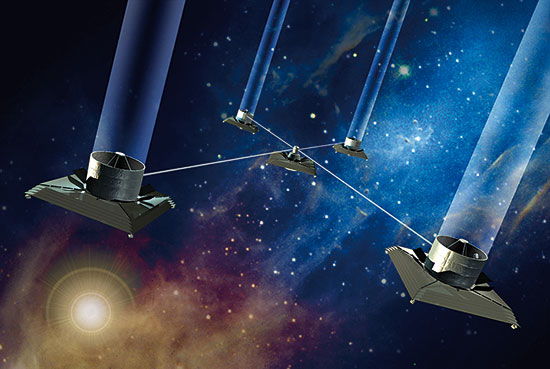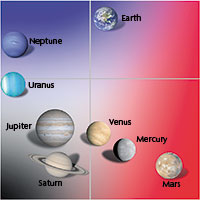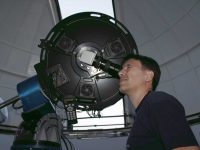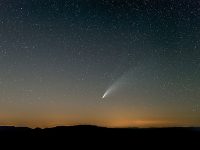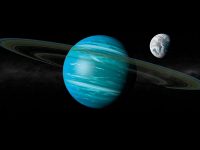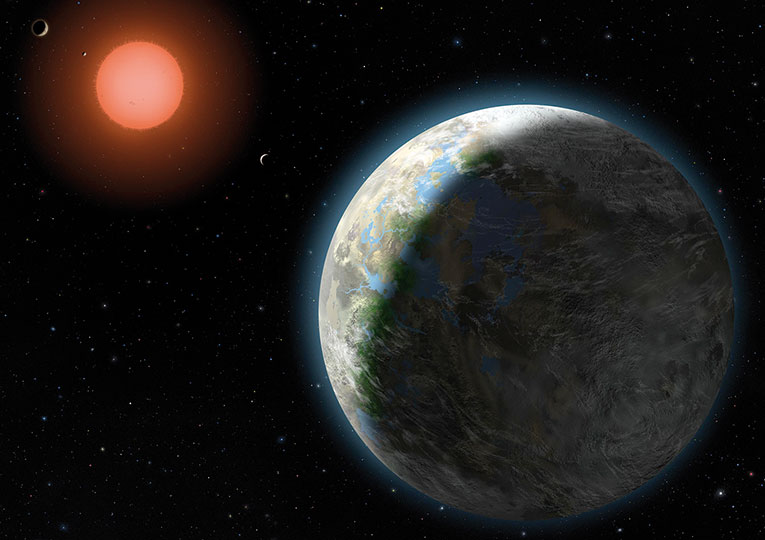 |
||
|
Since Swiss astronomers Michel Mayor and Didier Queloz announced the discovery of the first extrasolar planet or exoplanet, in 1995, different research groups worldwide took up the hunt for planets orbiting nearby stars. Hundreds of exoplanets have been indirectly detected. Most have been discovered by observing small star wobbles resulting from the gravitational pull caused by an orbiting planet. If the planet‘s mass is small, the trembling motion of the star will also be small but is detectable if the appropriate instrumentation is used. The speed at which a star is moving away from or towards an observer is known as radial velocity and can be measured using the Doppler effect: if a luminous object is moving away, the observer perceives the redshifted radiation (longer wavelengths), while if it is approaching its light becomes bluer, detected at shorter wavelengths. Star measurements using radial velocity with an accuracy of around 1 m/s have revealed hundreds of planets around other stars. Most planets detected this way are giants, such as Jupiter in our Solar System, and we can often infer the existence of systems formed by various planets orbiting around the same star. Another way to discover exoplanets is to observe the temporary dimming in a star’s brightness as a result of a planet passing in front of it. This method was used by David Charbonneau, Harvard University, and his team to detect a planet with a radius only 2.7 times larger than Earth. Probably 50% of this planet’s mass is water, surrounding a core of iron and nickel. It is not a planet like Earth, but it represents an important step forward in the exciting search for other worlds like ours. Recently, a team of astronomers from the University of California in Santa Cruz and the Carnegie Institution in Washington announced they had found a potentially habitable planet, revolving around a star other than the Sun. This is the first exoplanet to be detected on which possibly –albeit unlikely– some kind of life could evolve, as apparently it is in a habitable region of its star. This area falls within the range of distances from the star where a planet could contain liquid water, for instance, in the Solar System it is the region embracing the Earth‘s orbit. Conversely, Venus is too close to the Sun and Mars is too far away, thus they fall outside the habitable zone. The star around which this planet orbits is called Gliese 581 and is twenty light years away. There are six planets orbiting Gliese 581, although astronomers have not seen them, they have only detected the periodic variations in radial velocity and have been able to identify overlapping periods corresponding to the gravitational pull of each of the orbiting planets. Apparently, the planet that would be in the habitable region takes only 37 days to orbit the star and, most likely, spins in the same time: one day would last a year on planet Gliese 581 g, as it’s called. The star shines on the same side of the planet so that side would be very hot. Likewise, on the other face it would always be night and thus very cold. If the planet were to have an atmosphere, the winds would moderate its temperature somewhat, but we do not know whether this is the case. Only when scientific results are replicated by other groups are they confirmed and become part of the scientific consensus. Science progresses thus and collective scrutiny is required to ensure reliability. Apparently, the Geneva Observatory scientists have found no evidence of the existence of planet Gliese 581 g, but also admitted that at the same time they «cannot prove that it does not exist». Science does not allow rushed headlines. Many more observations and data analysis will be needed for the discovery to be confirmed definitively; otherwise it will fade into oblivion. The planets in the Solar System each have a characteristic colour. Mercury is greyish, Venus is bright white, Earth is pale blue, Mars is red, Jupiter is orange with whitish brown rings, Saturn is pale yellow, Uranus is turquoise and Neptune deep blue. Colours are, in most cases, due to the composition of the planet’s atmosphere. The molecules that make up the Earth’s atmosphere disperse or spread blue light rays much more efficiently than red light, so the atmosphere seems blue –both from the surface of the Earth and from space– as seen by astronauts. In the case of Uranus and Neptune, the atmospheric composition is rich in methane, which is also responsible for the colour, while Mars, which has virtually no atmosphere, is reddish because of the abundant iron oxide on its surface. A recent study conducted by the NASA astronomer Lucy McFadden and a graduate student at UCLA, Carolyn Crow, describes a simple way to distinguish between the planets of our solar system based on colour information. Planets that show the characteristic blueness of the earth could have an atmosphere suitable to support life and, therefore, these should be studied in greater depth.
There are two scientific projects, currently in the initial phases, with the objective of finding Earth-like planets orbiting nearby stars: the NASA Terrestrial Planet Finder and the Darwin mission run by the European Space Agency. These missions are conceived as comprising a fleet of space telescopes with technology on board able to analyze planets’ atmospheres and search among them for these biological indicators. To make a direct observation of an exoplanet, the fundamental problem to be overcome is the blinding light of the star that accompanies it. The exo-Earths observed from tens of light years away, are at such a small angular separation from their stars that it is almost impossible to distinguish the planet’s tiny speck of light. The space telescopes designed for these missions use a process known as cancellation interferometry, whereby it is possible to cut out the star’s light, thus increasing the contrast some ten thousand million times and making the planet observable. Moreover, these instruments can analyze the light from planetary atmospheres by means of spectroscopy and thus establish the chemical composition. The study of the bands of carbon dioxide, water vapour, ozone and methane can be used to provide clues about the possibility of biological activity on the planet’s surface. It might even be possible to detect organic molecules or signs of chlorophyll and deduce, therefore, if photosynthetic activity exists on the planet similar to that of plants on Earth. Then we would surely conclude, as Giordano Bruno perceived over 600 years ago, that «the countless worlds in the universe are no worse and no less inhabited than our Earth». |
© Lynette Cook Artistic conception of the planetary system around the star Gliese 581, a red dwarf twenty light years from Earth. The planet in the foreground would apparently be found in the habitable region.
«Planets that show the characteristic blueness of the earth could have an atmosphere suitable for life and, therefore, these should be studied in greater depth» |
|
© Mètode 2011 - 68. Online only. After the Crisis - Winter 2010/11

